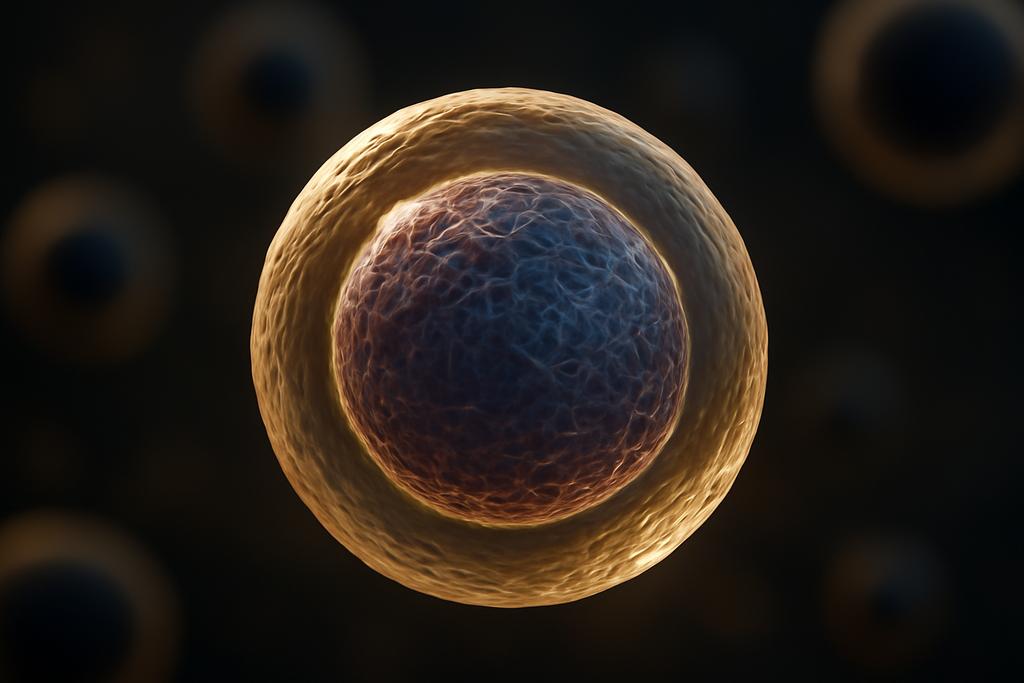The cell nucleus, that tiny command center within each of our cells, is far more intricate than it appears. It’s not just a passive container for our DNA; it’s a dynamic, exquisitely organized space where the machinery of life hums with activity. New research from Syracuse University and MIT reveals an unexpected physical mechanism driving this organization – a mechanism that involves a delicate dance between molecular motors, crosslinks within the DNA, and the flexible shell surrounding the nucleus itself.
A Delicate Balance: Motors, Crosslinks, and a Deformable Shell
Think of the nucleus as a crowded city, brimming with activity. Our DNA, packaged as chromatin, is like the city’s infrastructure – a complex network of roads and buildings. Within this network, molecular motors are the tireless delivery trucks, constantly moving proteins and other essential molecules. The researchers, led by Ligesh Theeyancheri, Edward J. Banigan, and J. M. Schwarz, focused on the interplay between these motors and the chromatin’s internal structure.
The chromatin isn’t just a tangled mess; it’s structured by crosslinks – points where different strands are bound together, similar to how bridges connect different parts of a city. These crosslinks aren’t fixed; their distribution across the nucleus is variable. Furthermore, the nuclear envelope, the outer membrane surrounding the nucleus, isn’t rigid; it’s a flexible shell that can deform and change shape.
The researchers used computer simulations to model this complex system. They varied the distribution of the crosslinks, using uniform, linear (increasing from the center to the edge), and inverted (decreasing from the center to the edge) patterns. They also introduced both extensile motors (pushing chromatin apart) and contractile motors (pulling it together).
The Surprise: Contractile Motors and Linear Crosslinks
The researchers found something remarkable. When they simulated a nucleus with a linear distribution of crosslinks and contractile motors, the resulting chromatin organization strikingly resembled that found in real cells. In nature, the denser heterochromatin (gene-poor, transcriptionally inactive regions) tends to cluster at the nuclear periphery, while the looser euchromatin (gene-rich, transcriptionally active regions) is found in the interior. This pattern emerged naturally in the simulation only under these specific conditions.
Why this specific combination? The contractile motors, they discovered, preferentially pull crosslinks towards the nuclear periphery. This concentrates the crosslinks, leading to denser chromatin packing – effectively creating the heterochromatin regions at the edge. The linear distribution of crosslinks, initially subtle, was amplified by this motor activity.
Implications and Future Research
This finding provides a fascinating new perspective on the organization of the cell nucleus. It suggests that the intricate spatial arrangement of chromatin isn’t simply a matter of chemical affinities but is also shaped by the dynamic physical forces within the nucleus. This is an unexpected level of organization, highlighting the sophisticated physics at play even at the cellular level. The researchers suggest that the resulting compaction isn’t driven by full phase separation, but instead by local, density-driven effects.
The study highlights the crucial role of mechanical forces in cellular processes. It emphasizes that even within the confined space of the nucleus, the constant activity of molecular motors and the flexible nature of the nuclear envelope have profound effects on genome organization. This has implications for our understanding of gene regulation, DNA repair, and other essential cellular functions.
The research team further suggests several ways to validate these findings experimentally. Techniques like high-resolution imaging combined with genetic manipulations of crosslink density and motor activity could provide strong evidence supporting their model. This involves manipulating the expression levels of specific proteins known to be involved in the crosslinking process or even using optogenetic methods to control the positioning of those crosslinks directly. By carefully perturbing the system, researchers can directly test the model’s predictions.
This research opens new avenues for exploration. Understanding the precise physical mechanisms governing nuclear organization is critical for comprehending both the normal functioning of cells and the disruptions associated with disease. Future studies may delve deeper into the interplay between different motor types and crosslink distributions, furthering our understanding of this remarkably well-organized cellular factory.










